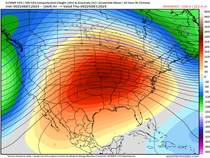HERE COMES THE ECLIPSE... AND SOME STORMS
- rebeccakopelman
- Aug 20, 2017
- 2 min read
The day is here - the Great American Solar Eclipse! The eclipse will occur from northwest to southeast across the United States. Here's a great simulation of what the *total* eclipse will look like from the ground.
Here's the cloud forecast around 1 pm across the United States:

The brighter blues are indicating 100% cloud coverage and white is clear skies. Many in the path of totality are in the clear, with the exception of Nebraska and parts of South Carolina. In the Midwest, storm chances will be high throughout the day Monday. Here's a model simulation from early Monday morning through Monday night:

Storms in the morning will play a role in the cloud cover during the peak of the eclipse. Indications are the showers and storms should be more widely scattered and even falling apart a bit by the peak of the eclipse. If storms linger a bit longer that would lead to obstructed views of the eclipse and thicker cloud cover. Let's go through the cloud cover forecasts for 1 pm Monday on four different models:




The better chances for having a good view of the eclipse is in southern Illinois and then into Missouri. If the clouds break up enough, there will be a good shot at seeing the eclipse in parts of Iowa and Illinois. Timing is going to be key.
After the eclipse happens, there will be another round of storms in the Midwest on Monday evening.

If there is enough clearing then the atmosphere will destabilize and the next round of storms will develop and some could be strong. Here are the CAPE (convective available potential energy) values for Monday evening:

Storms will be capable of strong winds and large hail late Monday afternoon and into the night. Storms will wind down early Tuesday morning and could provide beneficial rain for drought stricken areas:

Hopefully you get a good view of the eclipse or at least a good experience if rain/clouds are around. If not, here's a look at all of the total solar eclipses in the U.S. for the 21st century:














Comments